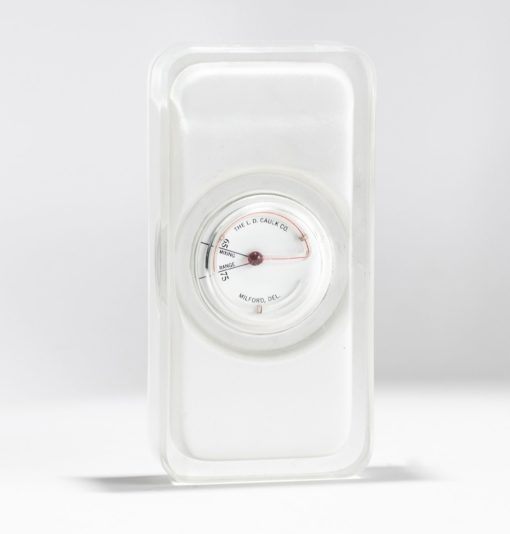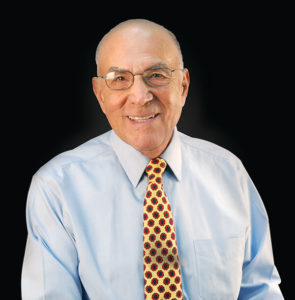How one company made it a little easier to use one of dentistry’s more finicky materials.
 MIXING ZINC PHOSPHATE CEMENT is an art. Not familiar with it? You’re probably too young. This mixture of zinc oxide, magnesium oxide and phosphoric acid evolved from its humble roots as wall plaster to become dental filling material, but quickly morphed into use as a cement (thin mix) and a base (thicker mix) in the 1940s, ’50s and ’60s.
MIXING ZINC PHOSPHATE CEMENT is an art. Not familiar with it? You’re probably too young. This mixture of zinc oxide, magnesium oxide and phosphoric acid evolved from its humble roots as wall plaster to become dental filling material, but quickly morphed into use as a cement (thin mix) and a base (thicker mix) in the 1940s, ’50s and ’60s.
For the best results, the technician needs to get as much powder into as little liquid as possible. A cool slab is essential for that task—but not so cool as to allow for condensation. Hence the nifty little item you see here. Manufactured by the L.D. Caulk Company (which was purchased by Dentsply in 1963), it went a step beyond ordinary glass mixing slabs by adding an embedded thermometer to help take the guesswork out of whether it was within the ideal temperature range.

LARRY COHEN, Benco Dental’s chairman and chief customer advocate, has over the past half-century collected hundreds of unique dental artifacts, which reside at Benco’s home office in Pittston, Pennsylvania.
Dental cements have advanced light years from the originals: SS White’s Zinc Cement, Caulk’s Tenacin and Mizzy’s Flecks. Yet despite the fact that we now have polycarboxylates, glass ionomers and zinc oxide and eugenol cements, zinc phosphate cement is used to this day. Benco still sells about 2,800 units every year!
Sadly for current users, nobody makes a deluxe slab like this one anymore. Then again, any dentists who still hold out with this stuff are probably experienced enough to get a great mix blindfolded. Zinc phosphate may be ancient, but it remains a viable dental cement. Proof positive, perhaps, that intraoral X-ray film will be around for years to come.



